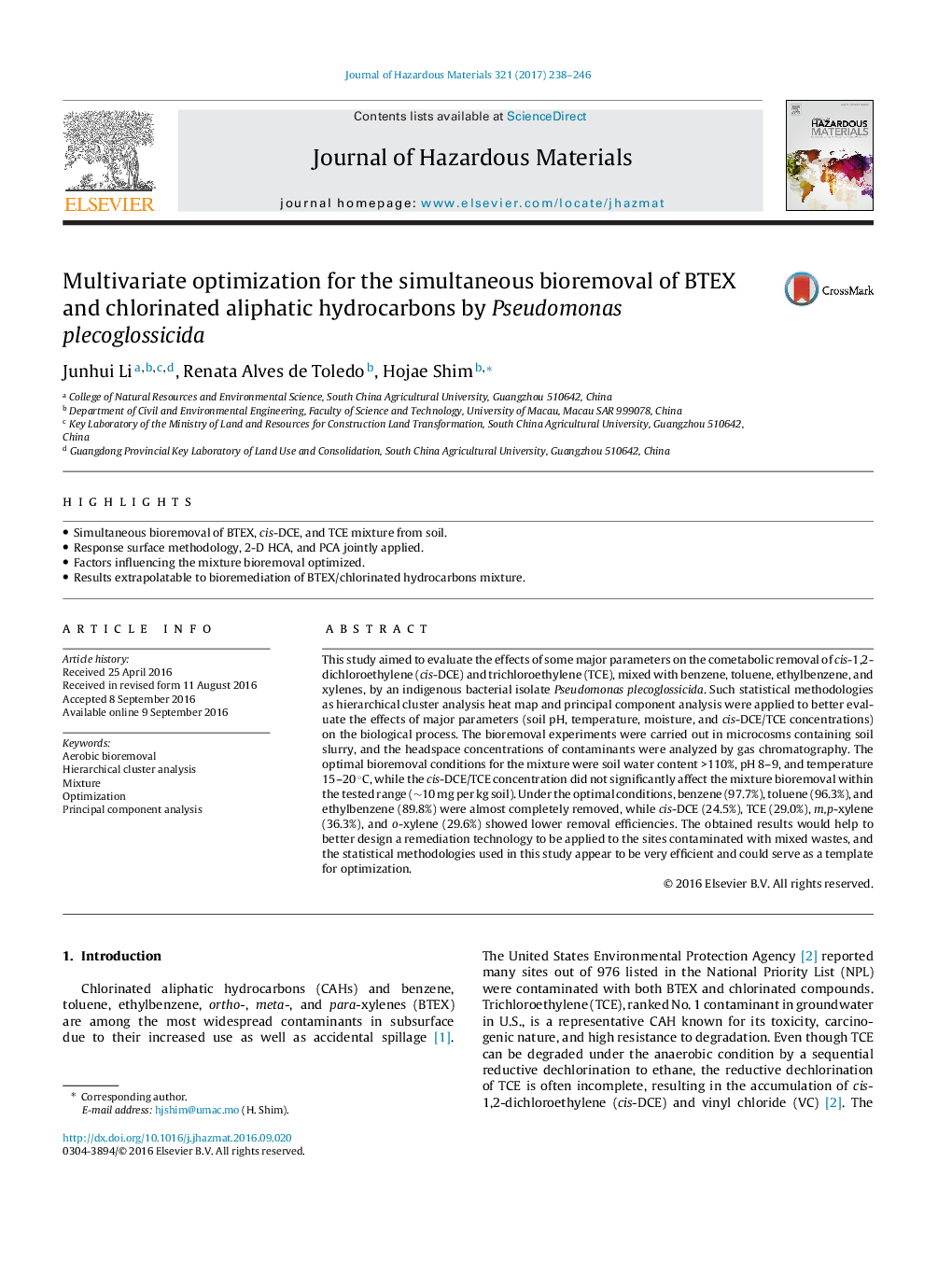| Article ID | Journal | Published Year | Pages | File Type |
|---|---|---|---|---|
| 4980048 | Journal of Hazardous Materials | 2017 | 9 Pages |
Abstract
This study aimed to evaluate the effects of some major parameters on the cometabolic removal of cis-1,2-dichloroethylene (cis-DCE) and trichloroethylene (TCE), mixed with benzene, toluene, ethylbenzene, and xylenes, by an indigenous bacterial isolate Pseudomonas plecoglossicida. Such statistical methodologies as hierarchical cluster analysis heat map and principal component analysis were applied to better evaluate the effects of major parameters (soil pH, temperature, moisture, and cis-DCE/TCE concentrations) on the biological process. The bioremoval experiments were carried out in microcosms containing soil slurry, and the headspace concentrations of contaminants were analyzed by gas chromatography. The optimal bioremoval conditions for the mixture were soil water content >110%, pH 8-9, and temperature 15-20 °C, while the cis-DCE/TCE concentration did not significantly affect the mixture bioremoval within the tested range (â¼10 mg per kg soil). Under the optimal conditions, benzene (97.7%), toluene (96.3%), and ethylbenzene (89.8%) were almost completely removed, while cis-DCE (24.5%), TCE (29.0%), m,p-xylene (36.3%), and o-xylene (29.6%) showed lower removal efficiencies. The obtained results would help to better design a remediation technology to be applied to the sites contaminated with mixed wastes, and the statistical methodologies used in this study appear to be very efficient and could serve as a template for optimization.
Keywords
Related Topics
Physical Sciences and Engineering
Chemical Engineering
Chemical Health and Safety
Authors
Junhui Li, Renata Alves de Toledo, Hojae Shim,
